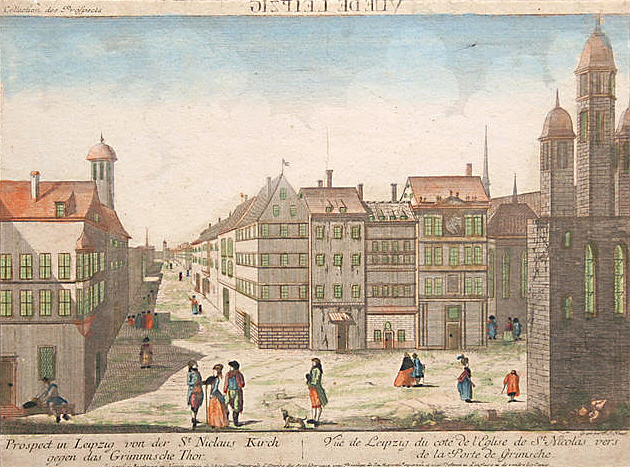Bach, Johann Sebastian, 1685-1750. Preise, Jerusalem, den Herrn
Enlarge text Shrink text- Bach, J.S. BWV 119 [SR] 1992:label (BWV 119 : Preise, Jerusalem, den Herrn = Praise, O Jerusalem, the Lord)
- Schmieder, 1990(119. Preise, Jerusalem, den Herrn; Kantate (Concerto) beim Ratswechsel zu Leipzig 1723)
Preise, Jerusalem, den Herrn (Praise the Lord, Jerusalem), BWV 119, is a sacred cantata by Johann Sebastian Bach. He composed it in Leipzig for Ratswechsel, the inauguration of a new town council, and first performed it on 30 August 1723. Bach composed the cantata in his first year as Thomaskantor in Leipzig, about three months after taking office at the end of May 1723. A festive service at the Nikolaikirche was an annual event, celebrating the inauguration of a new town council, always held on the Monday after St. Bartholomew (August 24). The text by an anonymous poet includes psalm verses and an excerpt from Martin Luther's German Te Deum. It is focused on acknowledgement of authority as a gift of God, thanks for past blessings, and prayer for future help. The cantata is structured in nine movements, three of them choral (1, 7, 9), the others alternating arias and recitatives. The orchestra is large and representative, with four trumpets, timpani, two recorders and three oboes, in addition to strings and basso continuo. Bach led the Thomanerchor in the first performance. In 2015 the cantata was performed by the Thomanerchor at the place of its premiere on 12 June, opening the Bachfest and celebrating both the 1000th anniversary of the first recorded mention of Leipzig and the 850th anniversary of the Nikolaikirche.
Read more on Wikipedia >
 Title
Title



